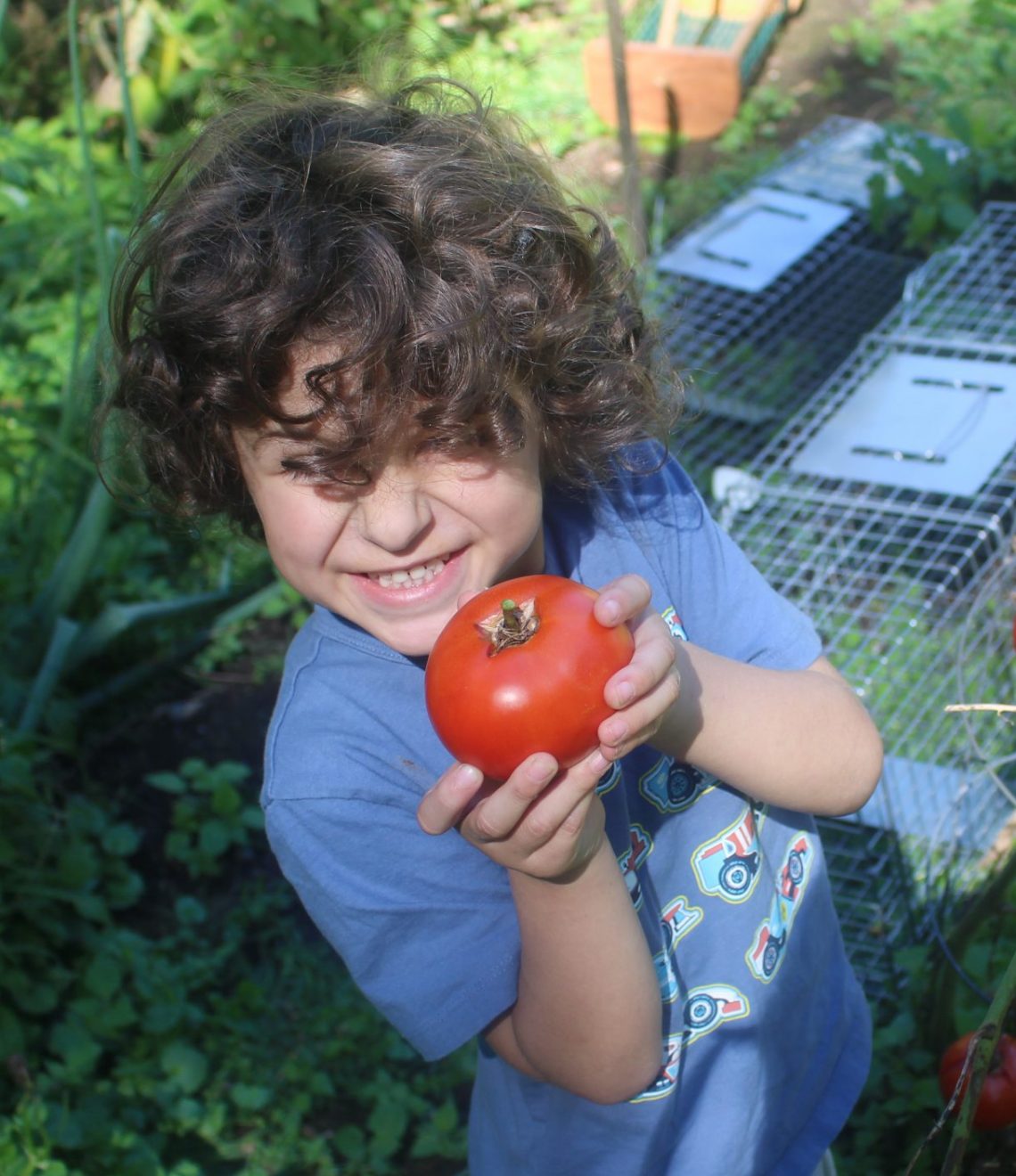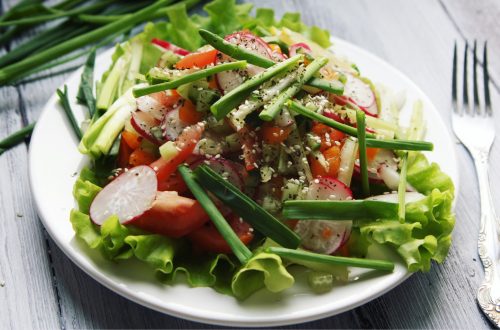
Eats, Shoots, and Leaves
Better-tasting food starts with having fresh, nourishing ingredients. A Chinese proverb has the right idea: “The field nourishes the people who live in it.” In other words, they use what’s available in the local village market because it’s fresh and tastes better. It’s not some exotic ingredient trucked in from elsewhere or a boxed set of salt-laden mystery ingredients. Sure, it may take a little more work and effort, but the flavor and nutrition are worth it.
Getting fresh
Think about some of those strawberries that will soon be available here in New England. Sure, you can scoop them up at the supermarket, but chances are that they will not taste like the strawberry that you just picked in the morning from the “pick your own” field or, better yet, from your own garden. That plastic-encased supermarket strawberry likely was picked days or even a couple of weeks ago. It might taste a little like a strawberry, but will probably be overly firm and have a slight tart aftertaste. That fresh-picked strawberry? Unless it’s green, it’s going to gush sweet into your mouth with a lingering strawberry scent. That’s the beauty and the treasure of the local field or garden that nourishes the people who live there.
Tilling the soil
That brings me to my garden soil. This weekend, I’ll be moving the mulch pile that has been simmering over the past year to be spread over my garden soil. I’m building an organic future for the garden so that I can enjoy fresh vegetables throughout the growing season. Last year’s lawn clippings and raked leaves, together with the eggshells, greens, vegetable peels and trimmings, coffee grounds, and other organic kitchen scraps, have been communing with soil organisms to create a compost stew that enhances the physical, chemical, and biological properties of the garden soil. The result: soil that’s easy to till and spongy so that it holds water and encourages good germination and growth. Plus, I’m reducing the overall waste stream.
Once the compost has been spread over the soil, I’ll rototill it into the garden so that it’s ready for planting. In two to three months, I’ll be able to start literally enjoying the fruits of my labors. I’m already seeing some raspberry and rhubarb shoots rising out of the soil. My apple trees are starting to bud out.
Planting the kitchen garden
I’ve also begun planting annual herbs in my kitchen garden to supplement the perennials – chives and oregano – that are already growing there. When I need some herbs for a recipe, it’s just a matter of stepping outside and clipping a few sprigs to add to a soon-to-be consumed dish. There’s nothing like the flavors of fresh oregano, parsley, tarragon, chives, rosemary, thyme, and sage. I’ll also have some mint and basil in the vegetable garden – not only fresh vegetables, but also fresh flavors.
I’m already enjoying the fact that our local farm markets have some spring vegetables available. I’ve seen English peas, rhubarb, and ramps already, and I’m looking forward to other locally produced fruits and vegetables – spring onions, asparagus, and spring greens. It’s the beginning of the best time of year for locally produced food. Between my herb garden and the local farms, I could already plan a shaved asparagus salad with oranges and pecorino, this pasta with asparagus and mushrooms, or perhaps this mint and pea soup. Tonight, we’ll be dining on a grilled pork chop from a local farm topped with fresh rhubarb salsa.
How about you? What’s your favorite fresh crop?
To comment, please click on “Read in Browser” or on the headline to view the blog on the website. You can log in and comment at the end of the blog to share your thoughts and start a discussion.
If you’d like to share the blog, click on the Facebook icon or one of the others. Thanks!





One Comment
Carol Birkland
Hi Lynn, don’t know if you got my last post but if not, I will write it again.
Asparagus…what can I say? My mother loved it. At eight years old, I did not. But then my mother would say, “Okay, today we are going asparagus hunting.”
What this meant is that she would drive donw those country gravel roads that both you and I know very well and she could spy wild asparagus growing along the roadside even when she was driving the car. She would stop and it was my job to jump out, go down into the ditch, come up on the other side and break off the asparagus that she had seen. I don’t know what she did with it because I would not eat it and don’t know about my father, but these are lovely memories of those asparagus hunts.
Clearly, my view of asparagus had changed, When I frist went to Europe in 1967 people went crazy for the “white” asparagus in the spring. I think they grew it in mounds of earth so it would not turn green. They would throw tons of holandaise over it but I thought it was way, way too bland. Why were they afaird of the green.
Last week I made a NY Times recepie: pasta with asparagus, English peas (thank you, Trader Joes in Rochester, Minnesota), and sugar snap peas. It was great.
Love these posts!
Carol